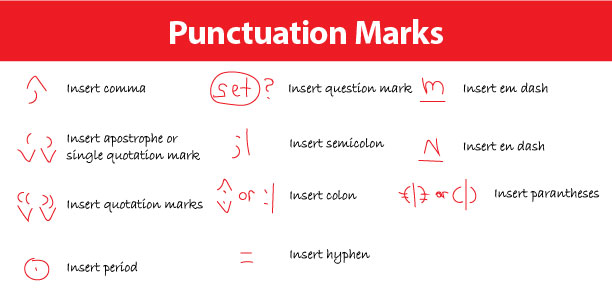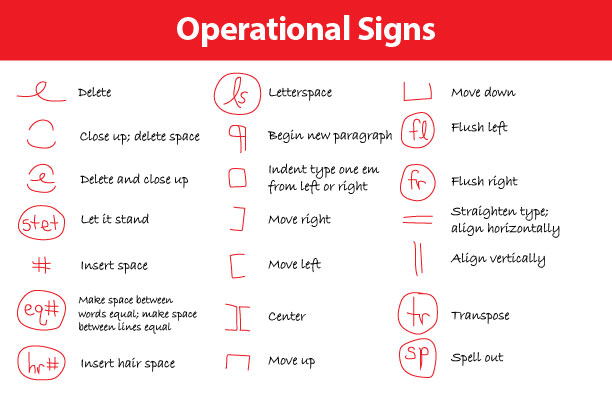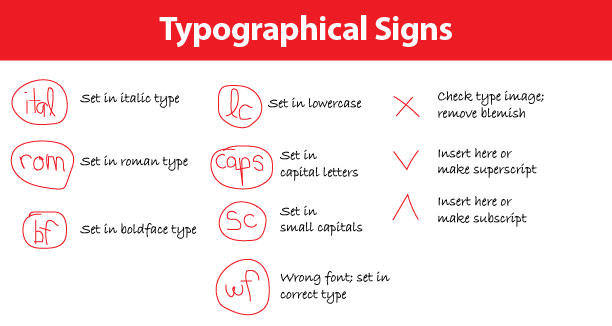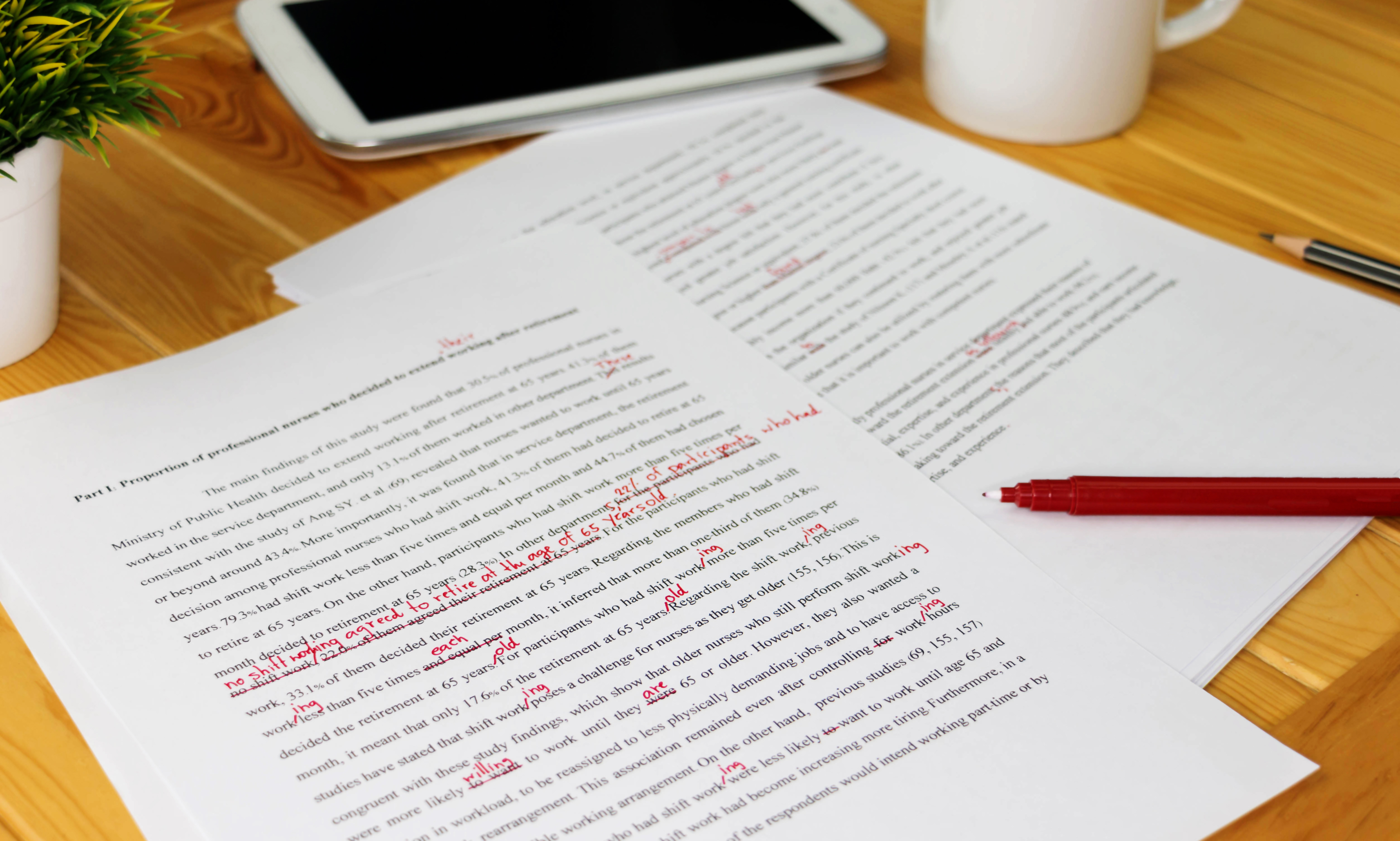
As an author, have you ever had an editor return your manuscript to you covered in red symbols you don’t quite understand? Trying to decipher all the marks is like learning another language. However, it is important to understand that the editor did not make proofreading marks to confuse you; rather, they intended to provide you with professional guidance on how to improve and polish your document, so it is ready for publication.
It has become increasingly popular for editors to complete their work digitally using software that tracks their changes. Meanwhile, editors are still trained to use proofreading marks and prefer to work with hard copies. Thus, it is extremely beneficial for authors to be familiar with some of the most common proofreading marks.
In this blog, you will learn more about proofreading marks so that when and if you receive a hand-edited document, you can understand the editor’s suggested changes.

What Are Proofreading Marks?
Also referred to as proofreading symbols and editing marks, proofreading marks are symbols and notations editors use to correct printed documents. Each symbol specifies a certain error the author should correct.
Typically, an editor will place proofreading marks in the margins of a corresponding line of text. If they make marginal marks that appear on the same line of text, they will use a slash to separate them.
It is important to know that some editors follow in-house style guides, which can result in varying proofreading marks. For this reason, the proofreading marks we refer to in this blog come from the 17th edition of the Chicago Manual of Style, which contains symbols that are standard across the industry.
Proofreading marks can be separated by the following categories:
- Punctuation Marks
- Operational Marks
- Typographical Marks
Punctuation Marks

As its name suggests, punctuation marks indicate that the writer needs to add punctuation to the document. Some of the most common punctuational marks include:
Operational Marks
Operational marks denote errors in content, layout, spacing, and more. Editors may ask the author to delete words, add a new paragraph, change the order of words, or remove a paragraph break. Most operational marks are self-explanatory, but some require further elaboration:
- “Delete” – indicates removing a word
- “Close up” – indicates deleting a space
- "Delete and close up” – indicates deleting a letter or letters within a word and deleting the space left from the removal
- "Let it stand” – indicates that the writer ignores a previously made proofreading mark and leaves it as-is
- "Transpose” – indicates that the order of letters or words needs to be changed
Here are some of the most used operational marks:

Typographical Marks
Typographical marks focus on individual words within sentences regarding their spelling and formatting (i.e., font, italics, capitalization, etc.). Here are some examples of common typographical marks:

The Importance of Editing and Proofreading
When it comes to academic writing, it is essential to have your work edited and reviewed by someone else. A copy editor and proofreader can help ensure that your ideas are communicated effectively to the right audience. By improving your grammar, punctuation, organization, and consistency, your manuscript will be much easier to read.
Investing in having your document edited and proofread will also increase your chances of publication. By having a professional copy editor and proofreader review your manuscript, you can address a range of issues that would usually lead to rejection if not resolved prior to submission. A well-crafted manuscript that has been copy edited and proofread by experts comes off as professional and organized. It shows that you are serious about your research and that you take pride in your work.

Make the Correct Choice
At eContent Pro (eCPro), we take pride in providing top-notch editorial services that are tailored to meet the needs of our clients. With over 20 years of experience in the publishing industry, we have earned a reputation for delivering high-quality work that is error-free and polished to perfection at the quickest turnaround time.
When you choose eCPro for your copy editing and academic proofreading needs, you can rest assured that you are working with a team of experts who are passionate about what they do. Our native English-speaking copy editors and certified proofreaders are highly experienced and specialize in over 10 research areas, ensuring that your document is in good hands.

In addition, we use Microsoft Word's Track Changes feature to perform edits, allowing you to easily review and manage the changes made to your document. We also follow various style guides, including APA 7th edition, MLA, APA, Chicago Style, and more, to ensure that your document adheres to the standards set by your academic institution or publisher.
We are committed to providing excellent service at a competitive price. Our English Language Copy Editing and Proofreading service costs just US $0.06 per word, with a turnaround time of 2-3 business days at no extra cost. Your total cost of copy editing will also benefit from our current 10% academic discount.
Through our analysis, we have seen a much higher acceptance rate and quicker submission processes with manuscripts that have received our English Language Copy Editing and Proofreading and Scientific & Scholarly Editing services. If you use one of our bundled services, you will receive an additional 10% discount that can be combined with our current 10% academic discount for a total discount of 20%!
So why wait? Contact us today to learn more about our editorial services and how we can help you achieve your publishing goals. With our team of experts by your side, you can be confident that your document will be polished to perfection and ready to stand out in the competitive publishing landscape.


